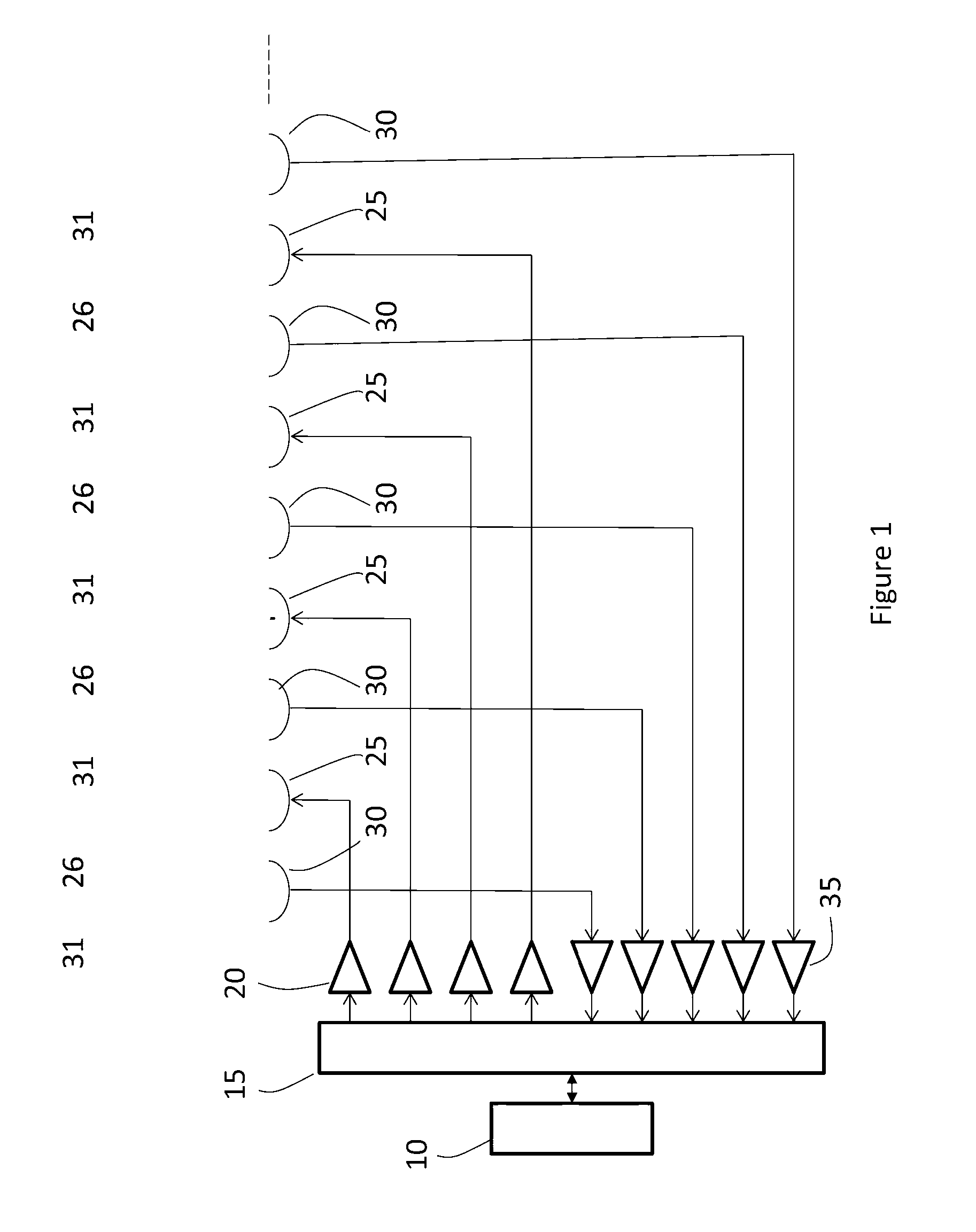Method and system for detecting aircraft induced wake turbulence
a technology of aircraft induced wake turbulence and detection method, which is applied in the field of sodar systems, can solve the problems of disrupting the flight of an aircraft encountering, affecting etc., and achieves the effect of ensuring the accuracy of turbulence detection and ensuring the alignment of the approach corridor
- Summary
- Abstract
- Description
- Claims
- Application Information
AI Technical Summary
Benefits of technology
Problems solved by technology
Method used
Image
Examples
Embodiment Construction
[0047]The present invention may provide an improved method and system for detecting aircraft induced wake turbulence and / or wind shear in an aperture or section of an aircraft arrival or departure corridor around an airport. The present invention may reliably detect presence of various types of background atmospheric and aircraft induced wake turbulence in the aperture. This may be done by repeatedly transmitting a beam of acoustic chirp signals and repeatedly measuring amplitude of received or backscattered acoustic echo signals to establish that wake turbulence is present in the aperture. The backscattered acoustic echo technique may detect various types of aircraft wake turbulence in all weather conditions.
[0048]To obtain sufficient coverage of an aperture for location of turbulence in real time, several transmitters and receivers may be used to cover the aperture. By using several chirp signal transmitters and receivers with substantially vertical directed beams, an aperture ort...
PUM
| Property | Measurement | Unit |
|---|---|---|
| diameter | aaaaa | aaaaa |
| diameter | aaaaa | aaaaa |
| rotational velocity | aaaaa | aaaaa |
Abstract
Description
Claims
Application Information
 Login to View More
Login to View More - R&D
- Intellectual Property
- Life Sciences
- Materials
- Tech Scout
- Unparalleled Data Quality
- Higher Quality Content
- 60% Fewer Hallucinations
Browse by: Latest US Patents, China's latest patents, Technical Efficacy Thesaurus, Application Domain, Technology Topic, Popular Technical Reports.
© 2025 PatSnap. All rights reserved.Legal|Privacy policy|Modern Slavery Act Transparency Statement|Sitemap|About US| Contact US: help@patsnap.com



